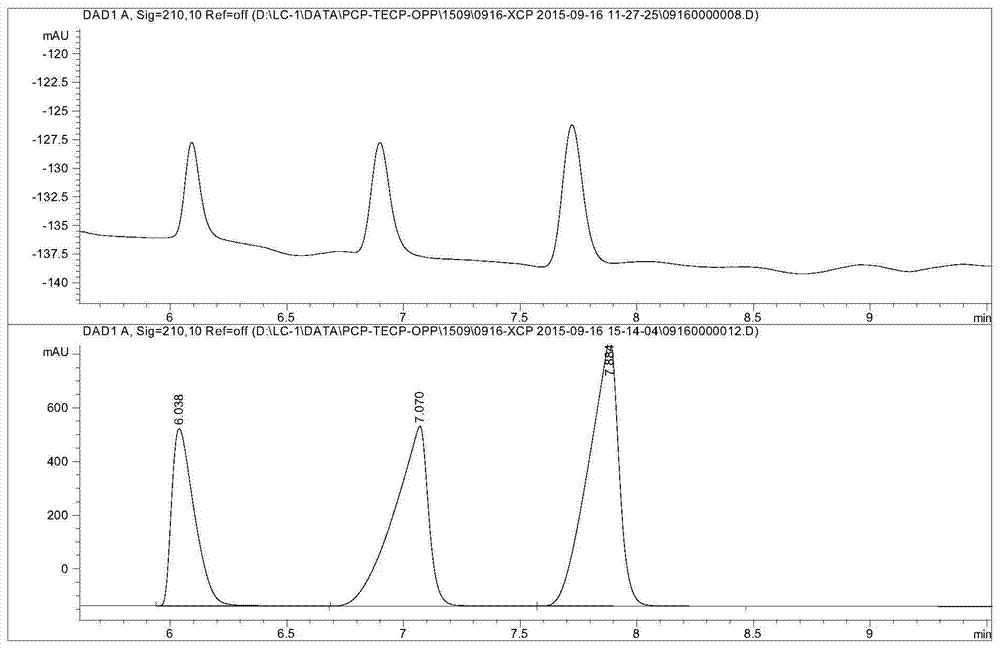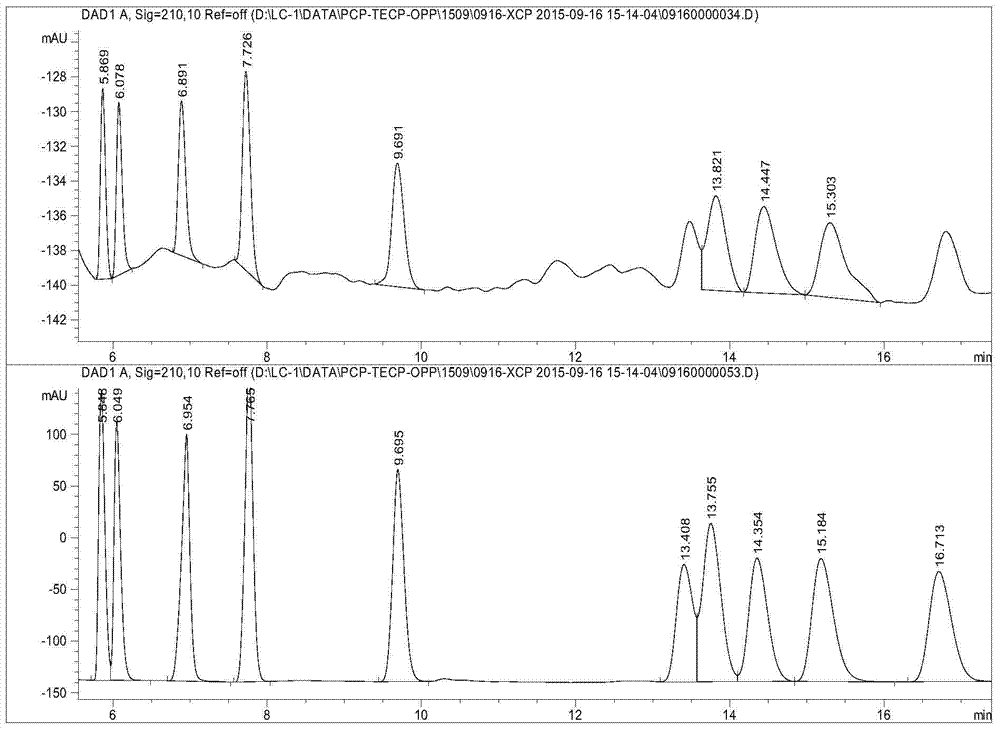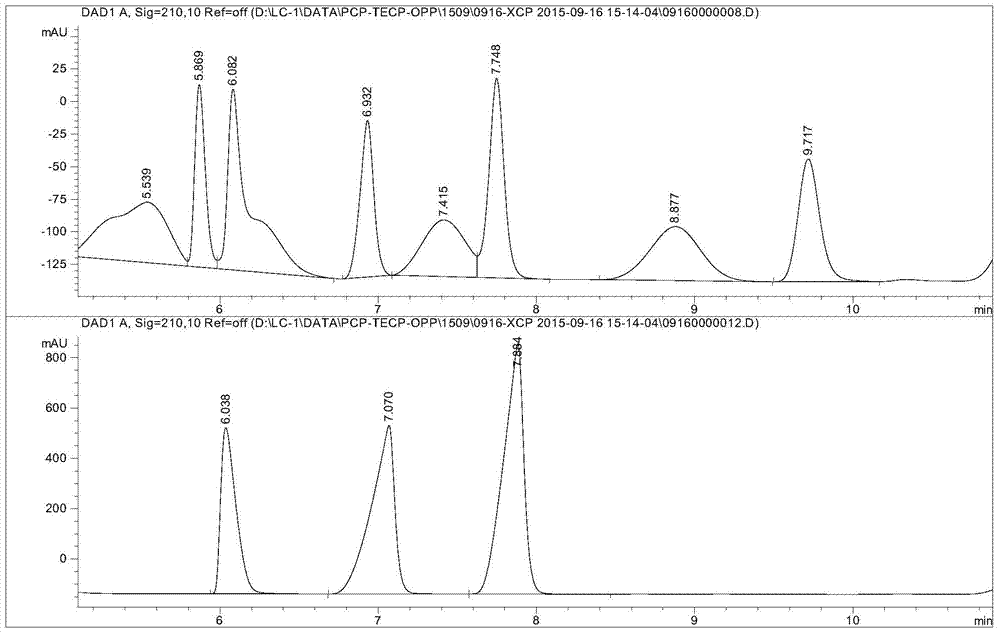Method for the detection of chlorophenols in textiles by hollow fiber liquid phase microextraction
A detection method and fiber liquid technology are applied in the field of analytical chemistry to achieve the effects of high extraction efficiency, increased solubility and improved extraction efficiency
- Summary
- Abstract
- Description
- Claims
- Application Information
AI Technical Summary
Problems solved by technology
Method used
Image
Examples
Embodiment 1
[0061] A method for detecting chlorophenols in hollow fiber liquid-phase microextraction textiles, specifically comprising the following steps:
[0062] (1) Preparation before the experiment:
[0063] 1) Sodium hydroxide solution (0.1 mol / L): Weigh 0.4 g of sodium hydroxide and dissolve it in water and dilute to 100 mL, shake well and set aside.
[0064] 2) Hydrochloric acid solution (3 mol / L): Pipette 25 mL of hydrochloric acid, dilute to 100 mL with water, shake well and set aside.
[0065] 3) Methanol water solution: Methanol and water are mixed at a volume ratio of 1:1, and the pH of the solution is adjusted to 1 with the above-mentioned hydrochloric acid solution.
[0066] 4) Magnetic stirrer: with micro-rotor.
[0067] 5) Polypropylene hollow fiber tube: 600 μm in diameter, 200 μm in wall thickness, and 0.2 μm in pore size. The polypropylene hollow fiber tube was cut into small pieces with a length of about 4.5 cm (volume about 10 μL), ultrasonically cleaned in aceton...
Embodiment 2
[0078] According to the method of embodiment 1, carry out following experiment:
[0079] Such as figure 1 As shown, the ratio of the concentration of the analyte in the receiving phase after extraction to the concentration of the analyte in the sample before extraction is the enrichment factor, according to the enrichment factor EF = C1 / C2 (where C1 is the concentration of the analyte in the extractant, C2 is the initial concentration of the sample solution), and the 1µg / mL chlorinated phenol standard solution was analyzed and determined, and the enrichment factors of 2,3,6-TrCP, 2,3,4,5-TeCP, and PCP were respectively 95 .
[0080] Such as figure 2 As shown, in order to verify the extraction and enrichment effect of this method on 10 kinds of chlorophenols and whether the properties of analytes changed before and after extraction, the direct injection chromatograms of 10 kinds of chlorophenol standard solutions were compared with those after enrichment by liquid phase micr...
Embodiment 3
[0082] According to the method of embodiment 1, carry out following experiment:
[0083] Purification effect test, such as image 3 As shown, because the hollow fiber membrane has a microporous structure, some macromolecular compounds and suspended particles can be filtered out by the hollow fiber membrane during extraction and enrichment, so it is more suitable for sample pretreatment of complex matrices. In this method, the sample solution enriched and extracted by the fiber tube is compared with the sample solution not enriched by the fiber tube. The results show that the purification effect of this method is obvious, and it has outstanding sample purification function. It can be used for direct analysis of complex matrix samples.
PUM
| Property | Measurement | Unit |
|---|---|---|
| length | aaaaa | aaaaa |
| diameter | aaaaa | aaaaa |
| thickness | aaaaa | aaaaa |
Abstract
Description
Claims
Application Information
 Login to View More
Login to View More - R&D
- Intellectual Property
- Life Sciences
- Materials
- Tech Scout
- Unparalleled Data Quality
- Higher Quality Content
- 60% Fewer Hallucinations
Browse by: Latest US Patents, China's latest patents, Technical Efficacy Thesaurus, Application Domain, Technology Topic, Popular Technical Reports.
© 2025 PatSnap. All rights reserved.Legal|Privacy policy|Modern Slavery Act Transparency Statement|Sitemap|About US| Contact US: help@patsnap.com



